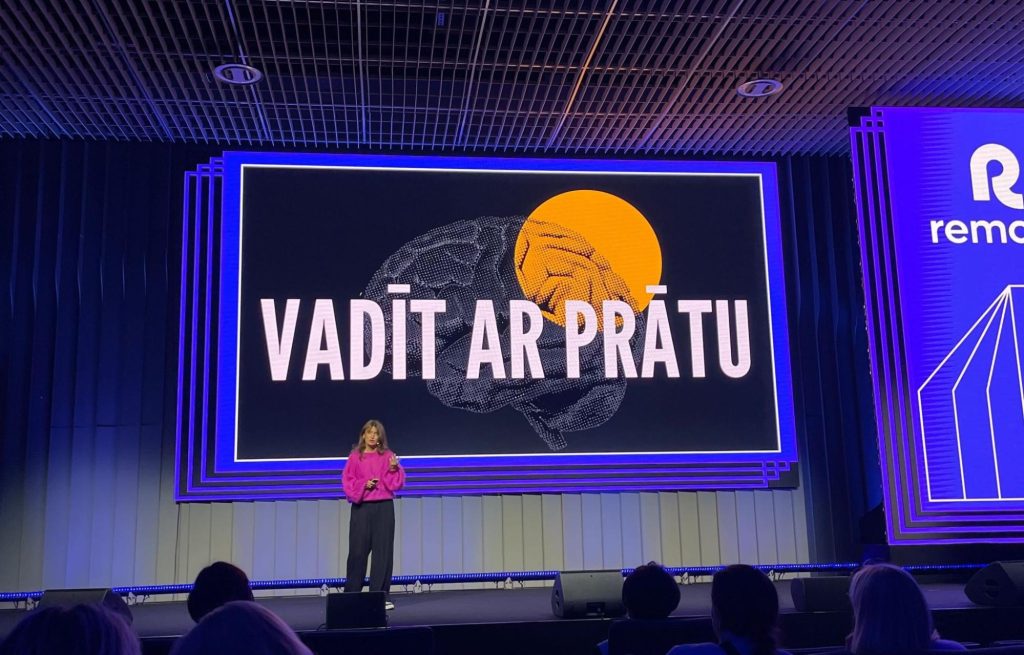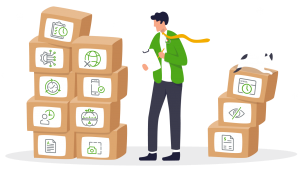I’m the COO & Head of HR at DeskTime—here’s how I use AI for human resources management and beyond

If you ask me, there are plenty of benefits to using AI for human resources management, and no, it’s not stealing my job. A 2025 study found that 43% of organizations now leverage AI for HR tasks, with the most common uses being job description generation, application review, and automated candidate search. But there’s plenty in human resources and people management that needs a human touch.
As to my relationship with AI, my DeskTime data shows I spend about 2-3 hours weekly using AI in human resource management and beyond. Our team uses Google Workspace, hence, I have access to Gemini, and I often use it at work to validate my ideas. For non-work-related matters, I use ChatGPT Pro on my phone. I also use Claude AI as an AI tool for human resources, although I do so far less often.
Answering the classic question of whether AI could steal my job, I can say with certainty that there are aspects of HR and people management that AI cannot replace. People are emotional beings, and AI will never truly understand emotions. And precisely because a living person is so complicated and unpredictable, I believe that the social professions are “safe”.
But I love technology and am absolutely committed to staying up to date with the latest advancements, including AI. If something can speed up my work or help me with complex tasks, why should I shy away from using it? Hence, here’s how I use AI as the Chief Operations Officer and the Head of HR at DeskTime.
Want to get the most out of your time?
Try DeskTime for free!
Try free for 14 days · No credit card required.
By signing up, you agree to our terms and privacy policy.

AI for HR professionals—making the lonely road less solitary
When it comes to AI for HR professionals, I don’t leverage it much for traditional applications, such as automated resume screening or onboarding, AI-based employee performance analysis, or communicating with applicants during the interview process using AI bots.
However, I often validate my ideas or thoughts with AI. HR is in many ways a lonely field, especially if you’re the sole HR rep of a company. I often have to handle situations I cannot discuss with anyone. Thus, with the utmost caution to avoid disclosing sensitive information and without providing specific context, I sometimes ask for AI’s opinion or ask it to validate my train of thought.
For example, I might discuss how to structure complex conversations more effectively. Here’s a typical prompt sequence:
- Lay out a problem
- Explain my goal for a meeting, conversation, you name it
- Ask to provide me with talking points, phrases to use/not to use, tactics to adopt
There have been situations where AI has told me, “For this type of person, you can just forget about your usual path of active listening. Be short and bold in your communication,” and the advice has really helped, even though such an approach is contrary to my nature. If I hadn’t tried it and seen it work, I wouldn’t believe it.
Another thing—we use the DISC methodology at DeskTime. It’s a behavioral assessment model based on the theory of William Moulton Marston that categorizes people into four main personality styles: Dominance (D), Influence (I), Steadiness (S), and Conscientiousness (C).
When preparing for potentially tricky employee conversations, I leverage AI for strategic coaching. I feed it a prompt detailing the scenario and the person’s DISC profile (e.g., “I’m talking with a person who is this type in DISC methodology. How shall I prepare?”). The AI then provides guidance on how to conduct the conversation, suggesting specific sentences to use and, more importantly, those to avoid, ensuring the discussion is as productive as possible. That’s another way I use AI in human resources.
How AI can be used in HR to deliver impactful speeches

Another field where I use AI a lot is public speaking. As the CPO, I have to do that quite often, and AI tools are excellent at helping me summarize and find information for keynotes, presentations, and other public speaking formats. What I used to do via Google, I can now do with AI and save my most valuable resource—time. A typical prompt I use is “Find me research on [topic]”, which leads me to plenty of sources that I can analyze manually and use to shape talking points or a framework for a speech.
Once, an unexpected presentation landed on my agenda because a colleague was ill. It was a big conference, and I had spoken there a year ago, which involved about three months of preparation. Now, I had about 12 hours to prepare to deliver a colleague’s presentation as well as possible. And I couldn’t just read from notes, as I firmly believe that to give a good presentation, you have to deliver it by heart and infuse it with a lot of personal information.
Consequently, the presentation deck had essentially been created as a colleague’s presentation, with her voice and approach. I couldn’t change the visuals, but I had to take the same core information and deliver it in my way.
This is where AI really helped me. It first explained and clarified some of the information in my colleague’s presentation, which I didn’t know well enough to become an expert in that field right away. And, with AI, I was able to do this preparation in a matter of hours.

Looking to add efficiency to your workflow?
Give time tracking a try!
How to use (and not use) AI in HR operations
Another way to use AI in HR operations is to define new employment positions by querying it for industry standards and market research, and that’s my case as well. This is particularly helpful when establishing a role that’s entirely new to our company, as AI can quickly provide a general overview of the position’s core responsibilities and market context.
Moreover, I leverage AI to enhance our organizational metrics. By feeding it existing data, it helps me better formulate our OKRs and KPIs, determine effective strategies to reach goals, and identify the best ways to gather specific data.
As for team-wide adoption of AI, we encourage it at DeskTime because it often improves resource optimization and work efficiency. For example, why wouldn’t we automate marketing emails if we can? And yet, there’s a fine line between using AI to boost one’s productivity and as a substitute for necessary work.
For example, I intensely dislike when people send me information drafted with AI but present it as their own. You may have fed AI with the perfect prompt, but it can never understand the whole picture of a situation that’s happening in real life.
My core belief is that AI, at least as it is now, must be a helper, not the leading solution. Hence, if a job applicant submits a homework obviously completed by AI alone, I wouldn’t be impressed by candidates like that.
These assignments are usually kept relatively simple, and the goal is to give us a glimpse into the person’s thought process. We don’t need perfect results. We need to understand your mind a little bit to see if our team would be a good fit for you and vice versa.
AI is also often used to generate CVs. And I get the reasoning behind it, but I don’t generally like it. Based purely on experience, the highly optimized CV often does not match the person who shows up for the interview. And that is again why AI could never fully substitute an HR professional, as the candidate fit determination is a very human process.
Seeking balance in AI use beyond HR management
Like many people, I use AI for health advice, but most commonly to validate my family members’ health advice. I come from a family of doctors, including my little sister, and it still feels weird to take her advice, so I often double-check it with AI. Needless to say, I get a “yes, she’s right” answer a lot.
Additionally, I use AI to deep-dive into a topic I would like to learn more about. I love the idea of putting on my headphones and listening to someone deliver a fantastic lecture, explaining something to me. It talks to me and lets me ask questions, essentially acting as a personal tutor.
But, overall, I don’t rely heavily on the AI for personal use. Here’s an example that was sort of a wake-up call for me. My therapist asked me to write down a list of my fears, and I had this overwhelming urge to ask an AI tool to write a list of standard fears for a person instead of writing them down myself. Yes, I was busy at the time, and it was an understandable desire to just complete the homework instead of looking inside myself. But that scared me and still does a bit.
In this context, I sometimes think of my grandmother, who lived through the Second World War. She tells stories of her mother managing impossible situations and keeping her family safe, and immediately, I think, “ I don’t even know how I would survive without online banking”.
Consequently, when I have that massive urge to ask AI some elementary questions, I try not to. While it’s essential to adopt technological innovations and tools that make our jobs more efficient, it’s also more crucial than ever before to keep using our own minds.
Did you find this article useful? Give it a clap!
Psst! You can clap more than once if you really loved it 🙂